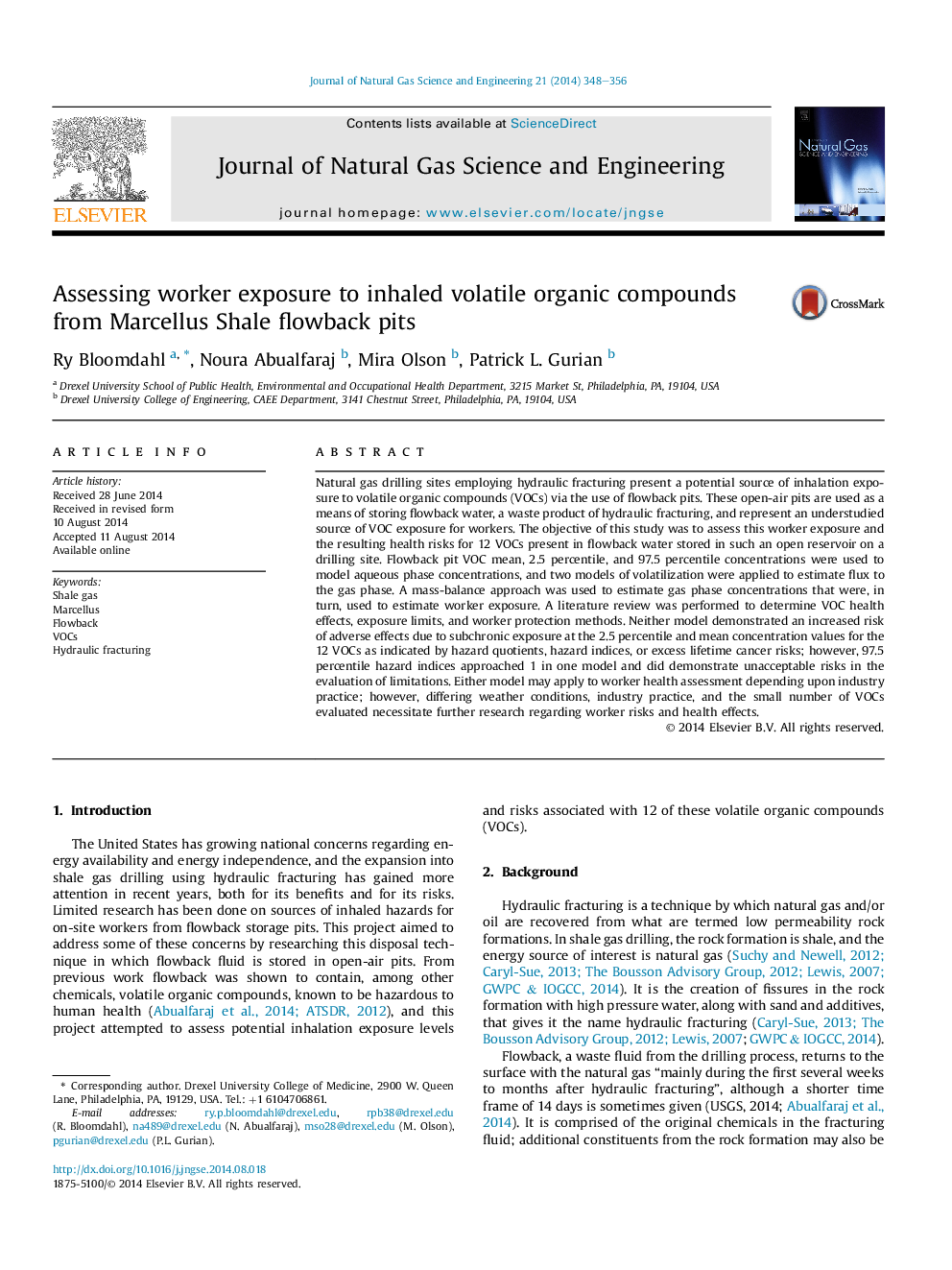| Article ID | Journal | Published Year | Pages | File Type |
|---|---|---|---|---|
| 8129200 | Journal of Natural Gas Science and Engineering | 2014 | 9 Pages |
Abstract
Natural gas drilling sites employing hydraulic fracturing present a potential source of inhalation exposure to volatile organic compounds (VOCs) via the use of flowback pits. These open-air pits are used as a means of storing flowback water, a waste product of hydraulic fracturing, and represent an understudied source of VOC exposure for workers. The objective of this study was to assess this worker exposure and the resulting health risks for 12 VOCs present in flowback water stored in such an open reservoir on a drilling site. Flowback pit VOC mean, 2.5 percentile, and 97.5 percentile concentrations were used to model aqueous phase concentrations, and two models of volatilization were applied to estimate flux to the gas phase. A mass-balance approach was used to estimate gas phase concentrations that were, in turn, used to estimate worker exposure. A literature review was performed to determine VOC health effects, exposure limits, and worker protection methods. Neither model demonstrated an increased risk of adverse effects due to subchronic exposure at the 2.5 percentile and mean concentration values for the 12 VOCs as indicated by hazard quotients, hazard indices, or excess lifetime cancer risks; however, 97.5 percentile hazard indices approached 1 in one model and did demonstrate unacceptable risks in the evaluation of limitations. Either model may apply to worker health assessment depending upon industry practice; however, differing weather conditions, industry practice, and the small number of VOCs evaluated necessitate further research regarding worker risks and health effects.
Related Topics
Physical Sciences and Engineering
Earth and Planetary Sciences
Earth and Planetary Sciences (General)
Authors
Ry Bloomdahl, Noura Abualfaraj, Mira Olson, Patrick L. Gurian,
